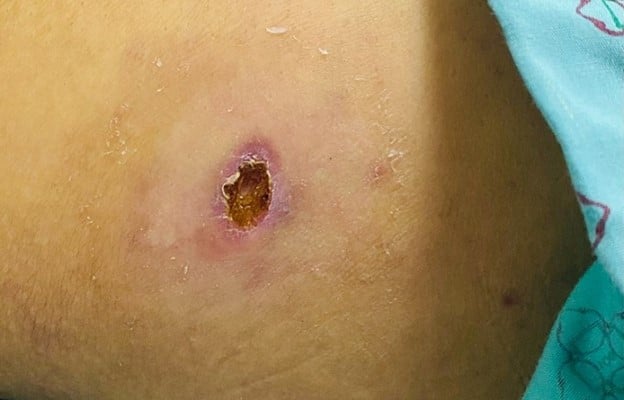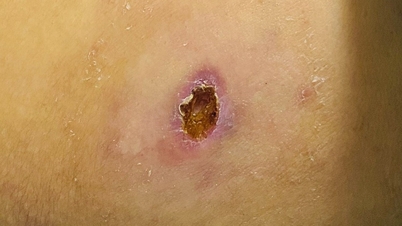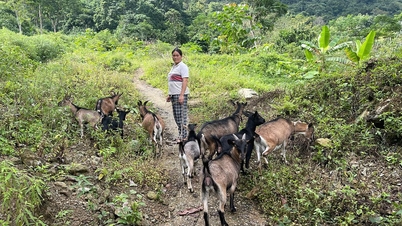Scrub typhus is also known as tick fever or jungle fever. People of all ages can get the disease, but it often appears and is common in workers. The disease can occur sporadically throughout the year, but is most common in the rainy and hot season. However, scrub typhus is not transmitted from person to person.

Ulcers on a patient with scrub typhus. (Photo: CDC Yen Bai ).
According to the Yen Bai CDC, the number of tick fever cases in August increased by 57 compared to the same period last year. Since the beginning of the year, Yen Bai has recorded 290 cases. Among them, a 16-year-old female, H'Mong ethnic, in Tram Tau district, died due to being late to the hospital. The patient's symptoms were severe, progressed rapidly, with complications of septic shock, blood clotting disorders, gastrointestinal bleeding, and she died after one day of treatment.
Scrub typhus is caused by the bacteria Rickettsia orientalis (also known as Orientia tsutsugamushi). They live as parasites in some rodents and small animals (rats, chickens) and are transmitted to humans through bites, usually in soft skin areas such as armpits, groin, genitals, neck, abdomen, earlobes, and navel.
Patients often get scrub typhus when working in fields, gardens, or on livestock farms. Symptoms include prolonged high fever, severe headache, congested mucous membranes, rash, characteristic skin ulcers caused by mite larvae bites, and painful swelling of the peripheral lymph nodes near the ulcers.
Scrub typhus has no specific test to diagnose, and its symptoms are very similar to other infectious diseases, so it is easy to confuse and miss the disease. In particular, people with the disease are likely to die when the disease is in a severe stage, with complications of multiple organ failure, but still cannot find a tick bite to make an accurate diagnosis. Currently, there is no vaccine to prevent scrub typhus.
To prevent scrub typhus, people living in areas where scrub typhus is prevalent need to take measures to prevent larvae such as avoiding areas with dense vegetation, wearing closed clothing, and clothing soaked in insect repellent chemicals.
Le Trang
Source







![[Photo] Prime Minister Pham Minh Chinh receives Lao Minister of Labor and Welfare Phosay Sayasone](https://vphoto.vietnam.vn/thumb/1200x675/vietnam/resource/IMAGE/2025/11/11/1762872028311_dsc-2246-jpg.webp)














![[Video] Many items are degraded as two large hospitals are slow to be put into use](https://vphoto.vietnam.vn/thumb/402x226/vietnam/resource/IMAGE/2025/11/12/1762906839099_dung00-29-15-18still010-jpg.webp)















































































![Dong Nai OCOP transition: [Article 3] Linking tourism with OCOP product consumption](https://vphoto.vietnam.vn/thumb/402x226/vietnam/resource/IMAGE/2025/11/10/1762739199309_1324-2740-7_n-162543_981.jpeg)








Comment (0)